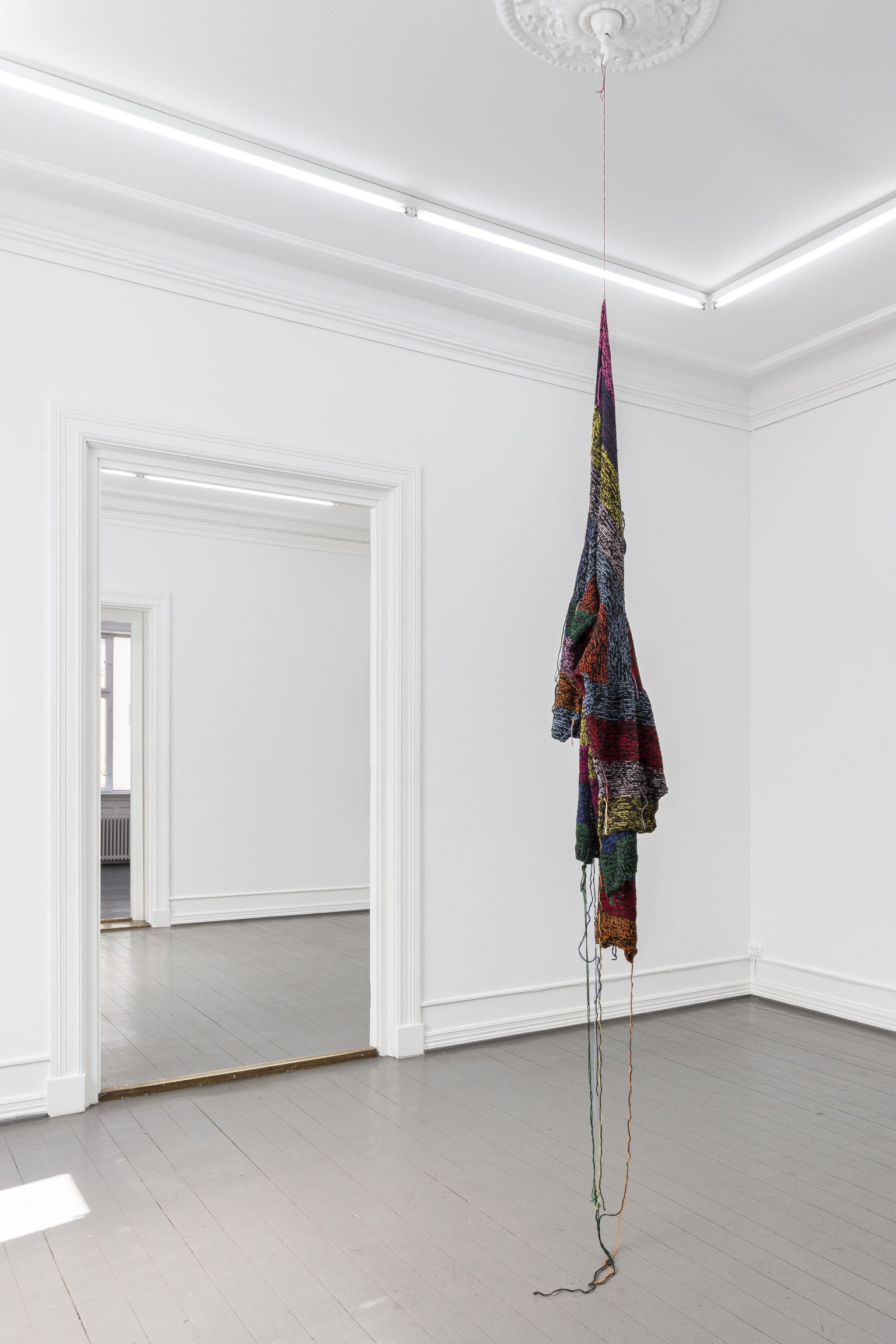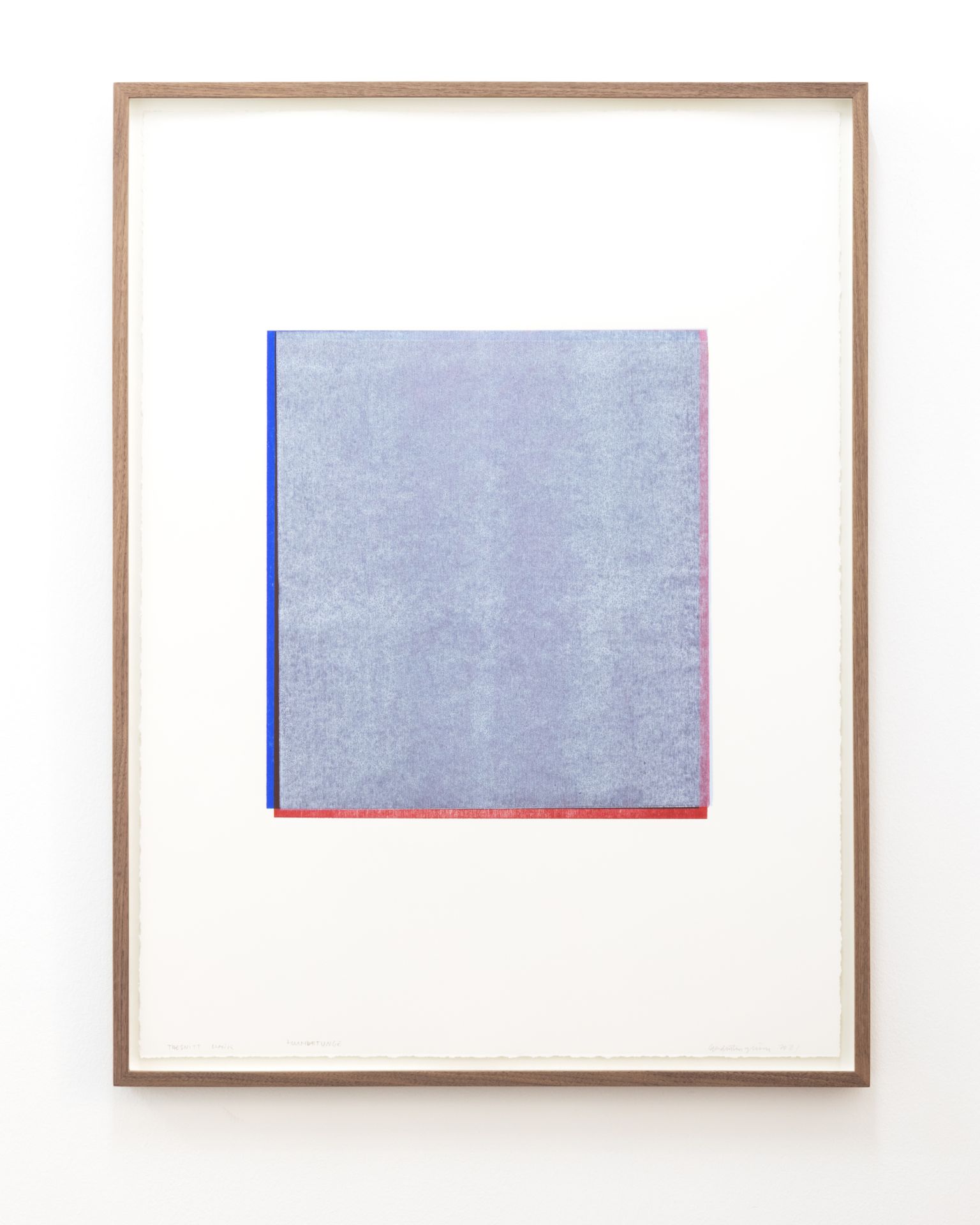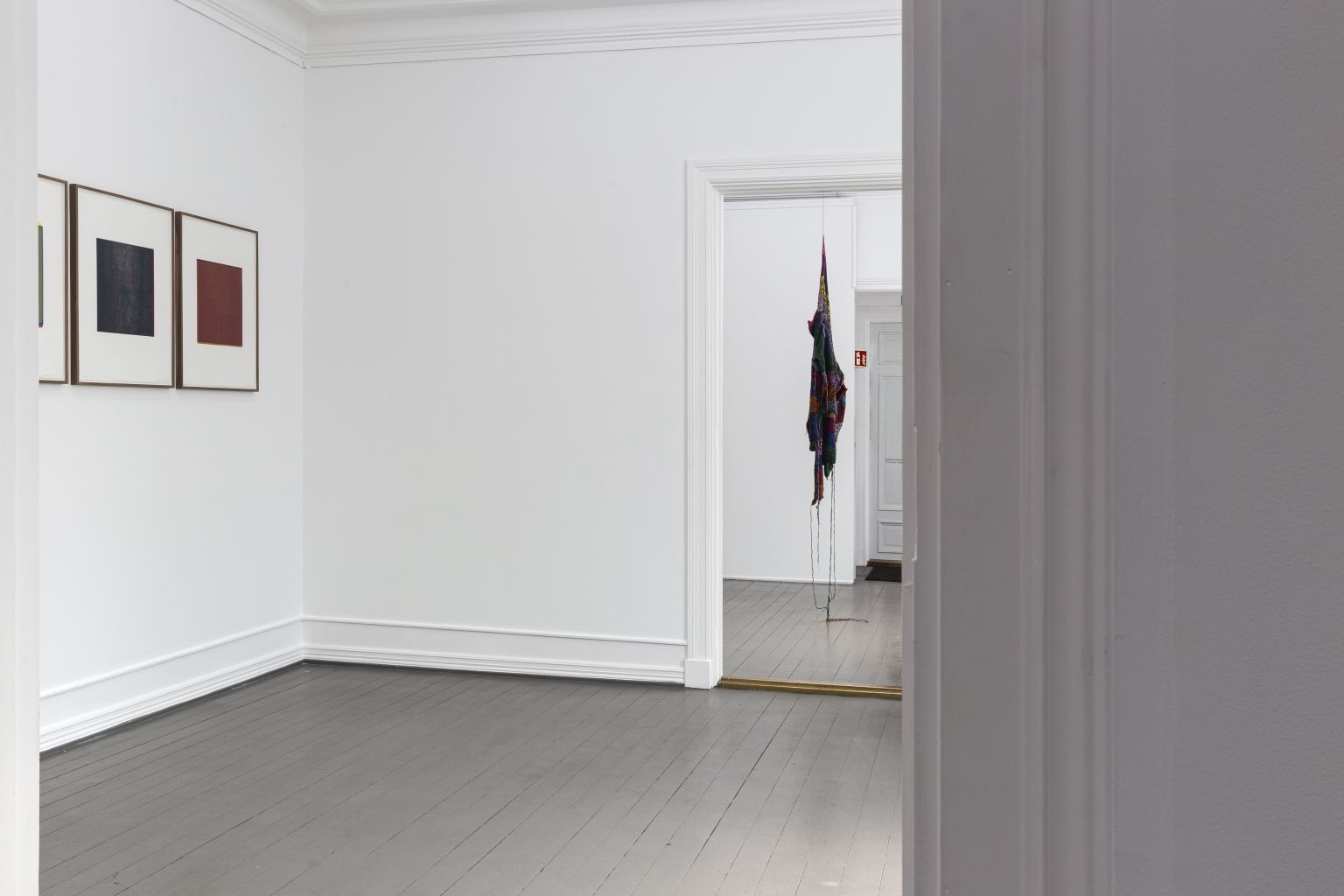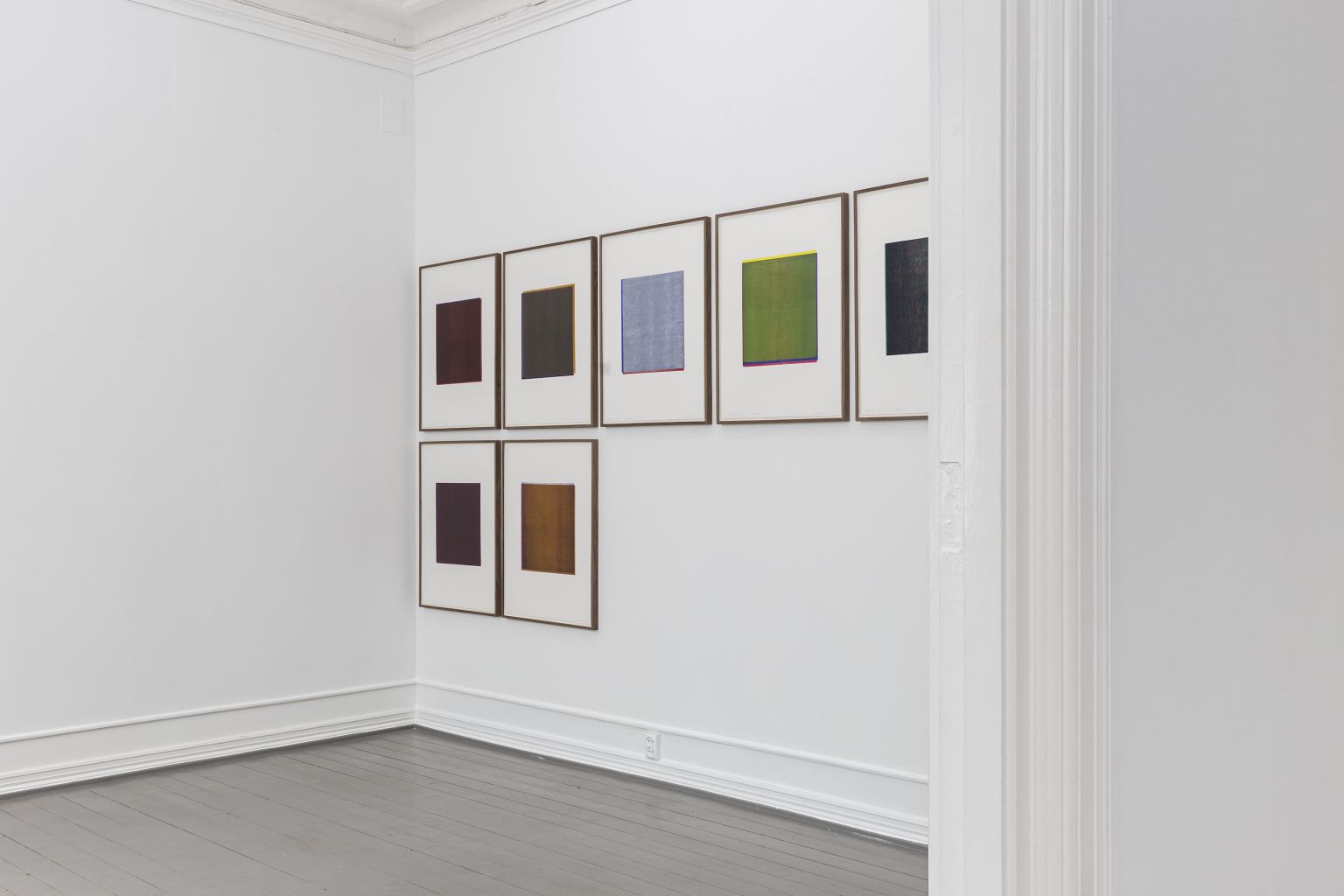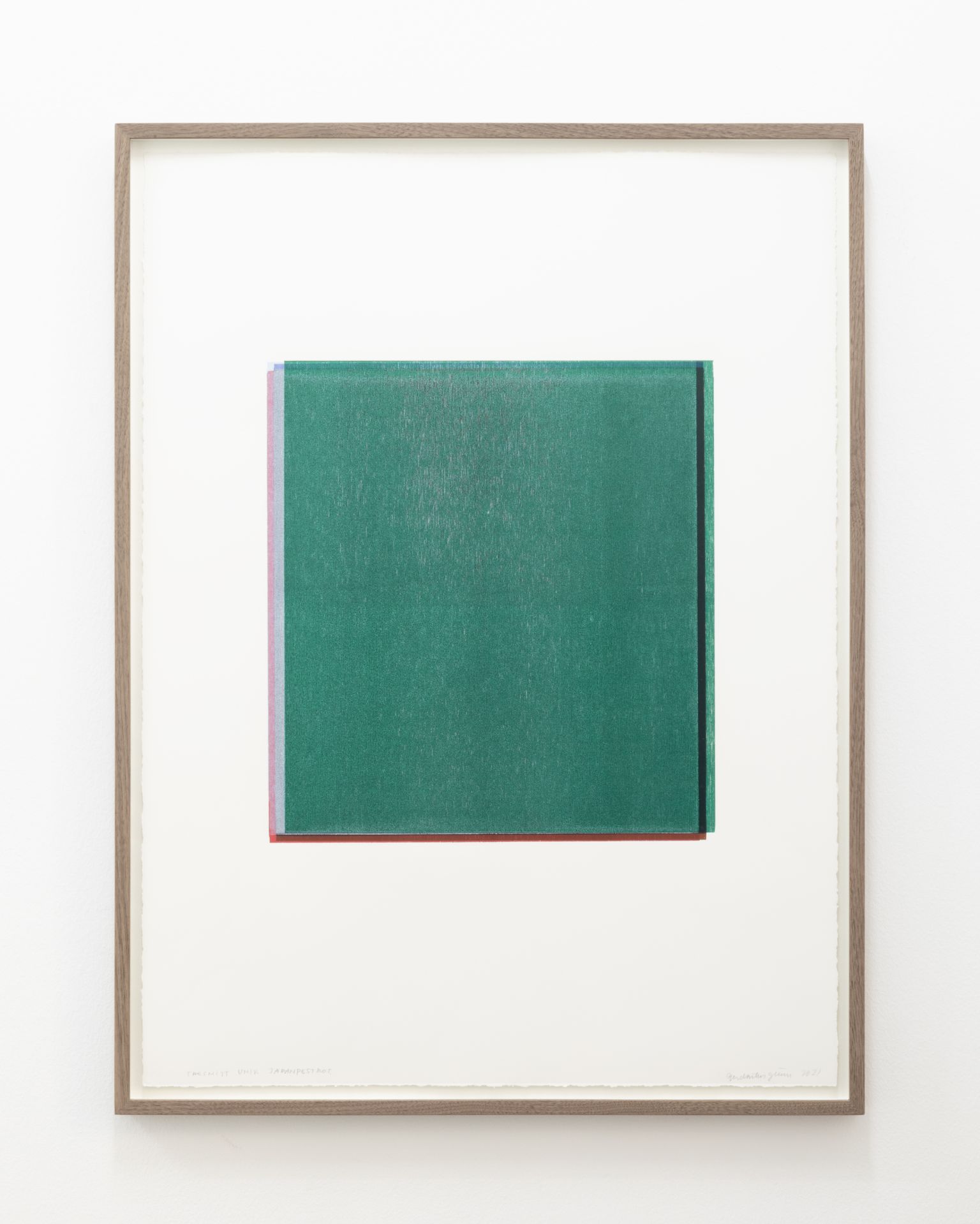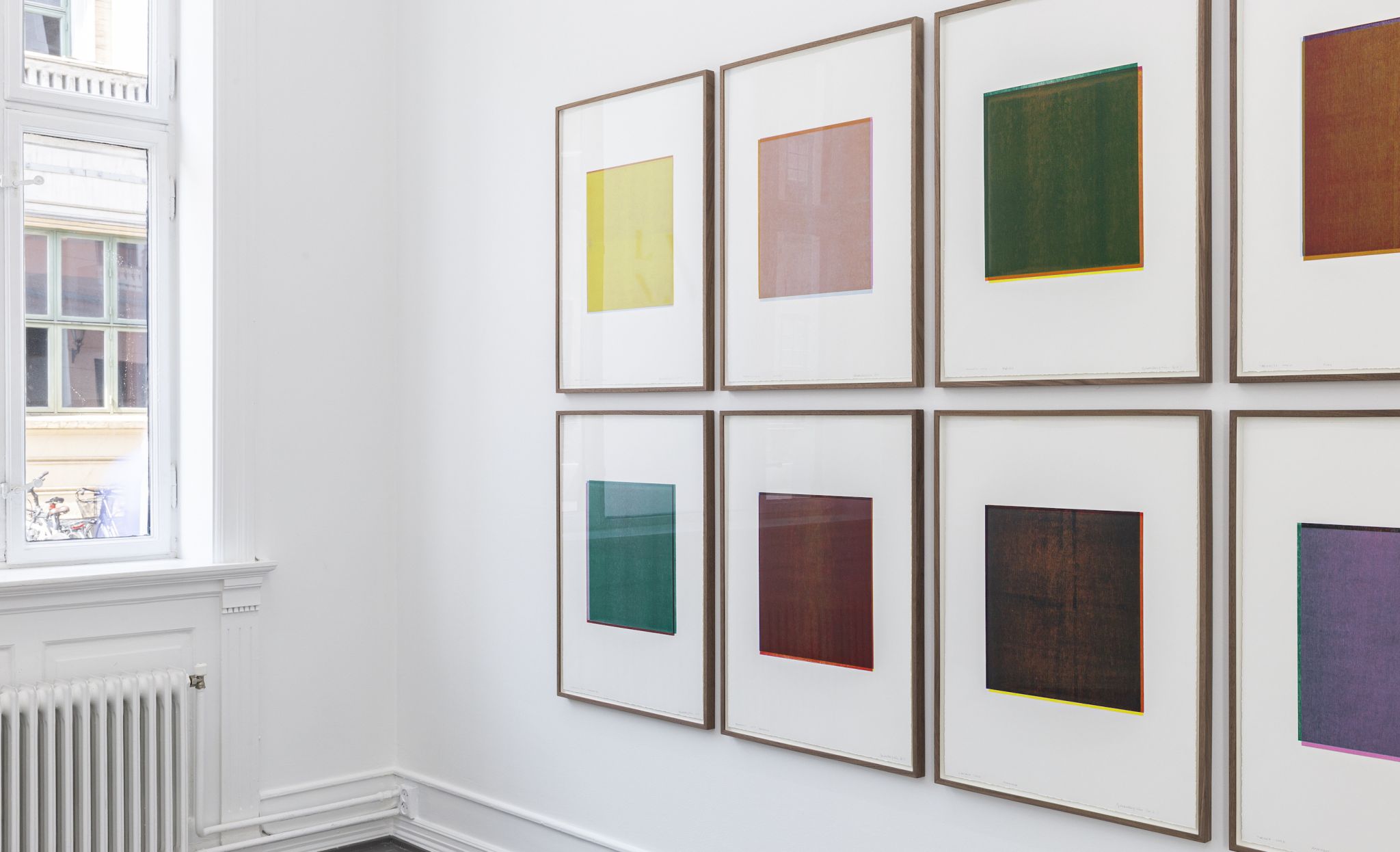
Gerd Tinglum
22 1/2
«I have forced myself to contradict myself in order to avoid conforming to my own taste.» – Marcel Duchamp
Gerd Tinglum is showing 20 new woodcuts from the series "Plants from the Unconscious" at LNM. She always works in series, and with a palette consisting of a limited number of colours.
In this series of works, Tinglum takes her own garden as a starting point, which is so large that she allows parts of the garden to grow freely and undisturbed, this part she has named 'the unconscious'. There is something free and uncontrollable about gardens that grow freely; someone long ago may have planted some perennials, seeds have come with the wind, or been carried there by birds, some trees have self-sown, and then they grow into a wild growing forest garden. It is the names of plants she believes to have found in this part of the garden, which she uses to determine the sequence of colours in the paintings. She has made rules for which colours and the order in which the colours are applied to the paper, which follow the names of the plants. These are principle of randomness, which she uses to avoid making visual choices herself that would easily seek harmony and aesthetics. The colours that are created do not represent the colours that one might associate with the plants. The works are printed with several layers of colour and can be seen as monochromes of colours that we do not easily recognize, or are able to give precise names to, but if you look closely, you can see the colours used to make the woodcuts.
Gerd Tinglum can be considered one of the pioneers in Norwegian conceptual art. Her works are idea-based, but the explorations of the concepts are often material-based. She studied for a period in the 70s in Japan, and focused there particularly on Nihonga, a Japanese traditional painting that is conditioned by a set of prescribed rules. Tinglum does not follow Nihonga's rules, but she has maintained an attitude inspired by this tradition. By working according to a set of predefined rules, she avoids that taste, habit and repetition affect the visual result. In this sense, she also works in the extension of American conceptual art, and Sol le Witt's Sentences on Conceptual Art has been important to her. This combination of material-based explorations and conceptually anchored series of works has resulted in an artistic practice that appears unusually strong, both conceptually, visually, and materially.
The title of the exhibition refers to the fact that this is the artist's solo exhibition number 23, where the fraction emphasizes that the exhibition is an ongoing process and is not completed until the exhibition is over.
––––––––––––––––––––––––––––––––––––––––––––––––––––––––––––––––––––––––––––––
Gerd Tinglum has, among others, exhibited at Kunsthallen Brandts in Odense, Randers Art Museum, Stavanger Art Museum, the National Museum of Art, Architecture and Design in Oslo, Kunstnernes Hus, Kunstnerforundet, Trondheim Kunstmuseum, Hå Gamle Prestegård, Dropsfabrikken and Kunstmuseet Nord-Trøndelag.
Her works have been acquired by (in selection): The National Museum of Art, Architecture and Design, Trondheim Municipality, Steinkjer Municipality, Stavanger Art Museum, Oslo Municipality's art collections, Bergen Art Museums, The Norwegian Embassy in Sri Lanka, Telenor's art collection, Drammens Museum. Tinglum has realised several works in public spaces, including for the Ministry of Foreign Affairs at the Norwegian Embassy in New Dehli, India, Furuseth Hageby Oslo Municipality, Oslo University Mortensrud Psychiatric Clinic, Halden Prison, Asker and Bærum Police Station, Henning Church and Steinkjer House of Culture.
Tinglum is educated in Germany, Norway and Japan. She lives and works in Oslo.
